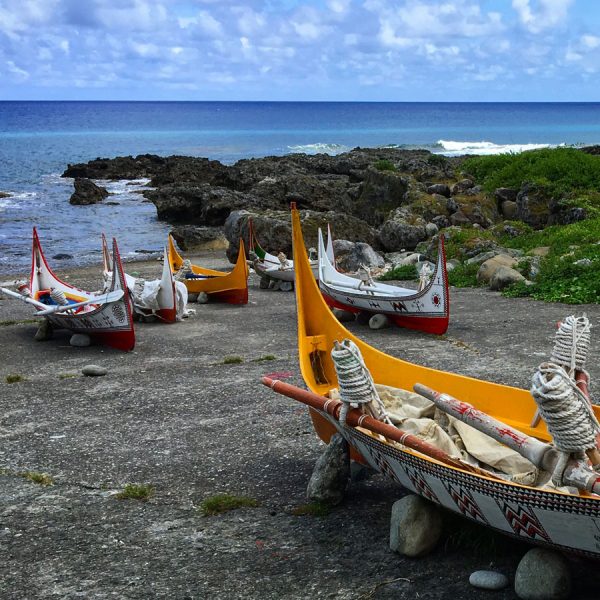Nangan is one of the Matsu Island’s main destinations and one of the places I visited on my recent trip to the Matsu Islands. I spent 2 nights there and put together this little post on my recommendations and things to do in Nangan if you are planning to visit these Taiwan offshore islands for yourself.
This article looks at the sights and things to do in Nangan. Check out my Beigan guide for things to do on the neighbouring island. This other post has more practical information on how to get to the Matsu Islands. I have another post all about Matsu Island’s Blue Tears as well.
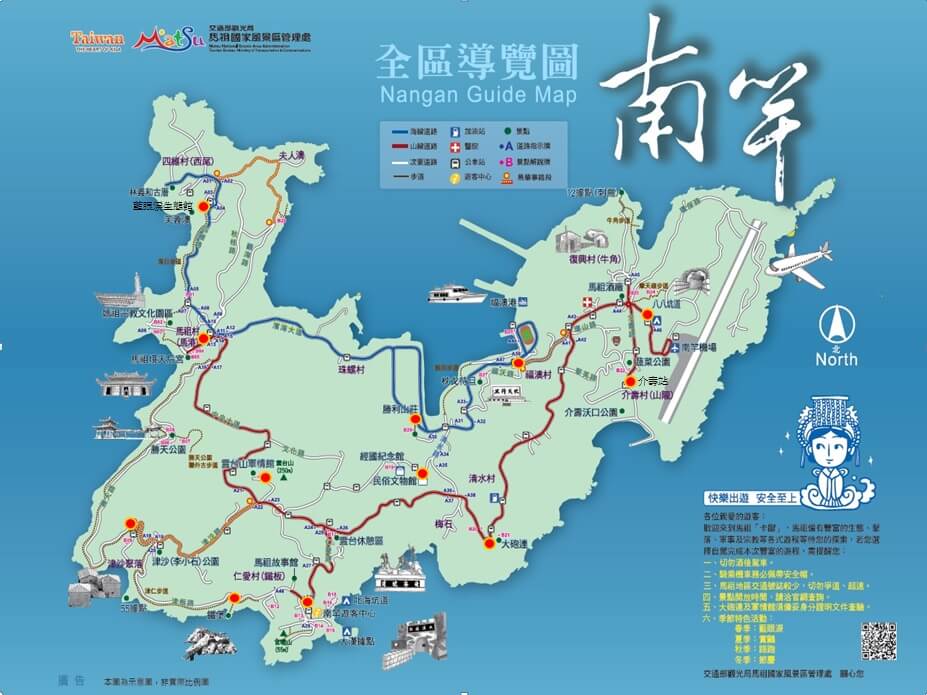
I’ve arranged this article according to the two major bus routes in Nangan Island for those who might be planning to take the bus around. Both routes start from Nangan airport – the Sea Route covers the north of the island while the Mountain Route hugs the southern coast.
How much time do you need to explore Nangan?
I spent 2 nights in Nangan Island, flying in from Songshan Airport in the afternoon on a Friday, and then taking the ferry to Beigan via Daqiu Island on Sunday morning.
Day 1 (late afternoon + evening): Iron Fort, Dahan Stronghold, Beihai Tunnel Blue Tears Boat Tour, Jinsha Village + Beach
Day 2 (full day): everything else in this article, including a return to Beihai Tunnel to walk around in the morning
I had my own transport to get around so that definitely made things faster, and ultimately the island itself isn’t that big so I thought this was sufficient time, but if you’re taking the public bus to get around or just want a more relaxing time, an additional day might not hurt.
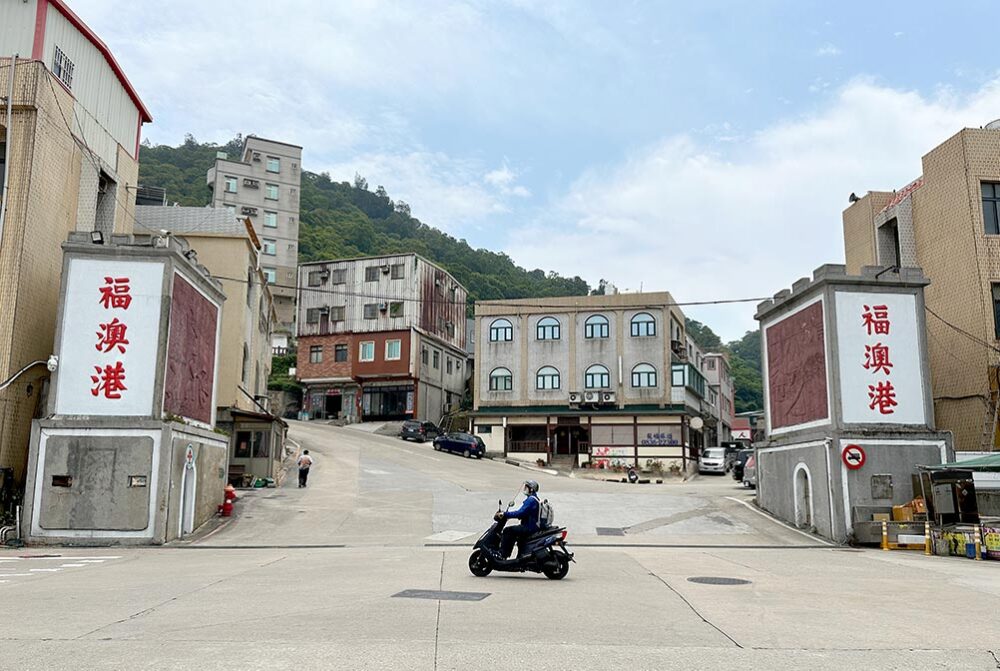
Can you take a day trip to Matsu Island’s Nangan?
If you flew in from Taipei on the earliest flight and reached Nangan at about 730am and departed on its latest flight at 645pm (assuming no flight cancellations), you probably could see Nangan’s main sights, but if you’re already going all the way there you might as well staya little longer.
People generally don’t day trip to the Matsu Islands even though it takes just about an hour by plane to get there. The standard package that I’ve seen for Matsu Island lights is for 3 days which is enough to see Nangan and Beigan in a whirlwind.
Important places in Nangan
Nangan Airport 南竿機場 (LZN)
Nangan Airport is the busier of Matsu Island’s two airports and located on the eastern edge of the island – you can read more details about flying to the Matsu Islands from Taipei on my Matsu Islands planning post.
It’s a very small airport! If you haven’t already made transport arrangements, you can easily get a taxi from the queue outside the airport.

Nangan Fu’ao Port 南竿福澳港
Nangan’s Fu’ao Port is the main port not just for Nangan but connecting the main Matsu Islands (Beigan, Juguang Islands and Dongyin) as well as to Taipei mainland (Keelung, Bali).
You can buy your ferry tickets from the ticket office here, or via online at eMatsu – more detail in my Matsu Islands planning post on how to get to the Matsu Islands by ferry as well as island hopping.
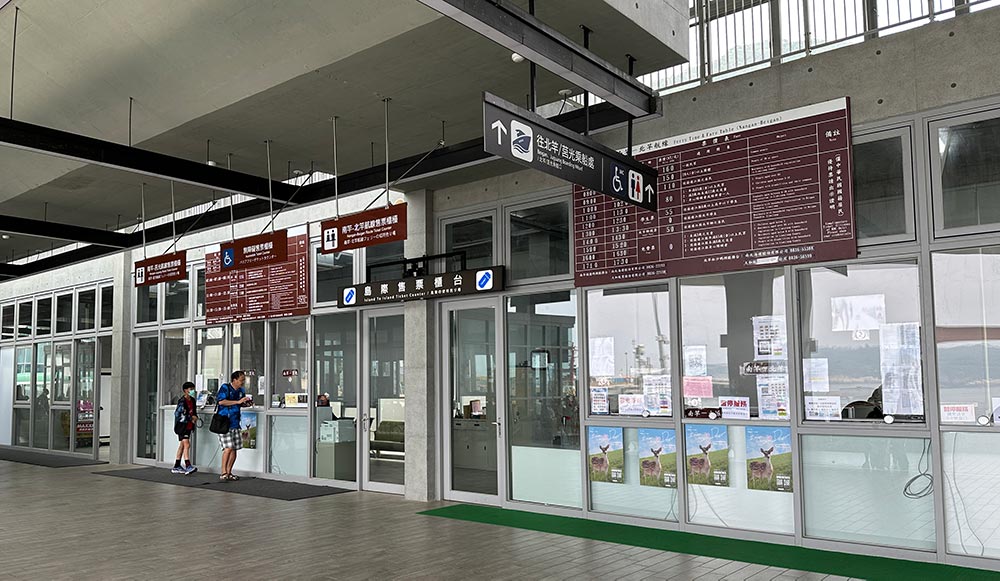
Nangan Visitor Centre 南竿遊客中心
The Nangan Visitor Centre is located at the entrance to the Beihai Tunnel and Dahan Stronghold. You can pick up maps from there, ask questions and of course use the toilet.
Nangan Sea Route 南竿海線
The sea route starts from Nangan Airport in the east and runs along the northern coastline.
Baba Tunnel 八八坑道
Right around the corner from the airport exit is the famous Baba Tunnel with its distinct rows of wine jars lining the entrance.
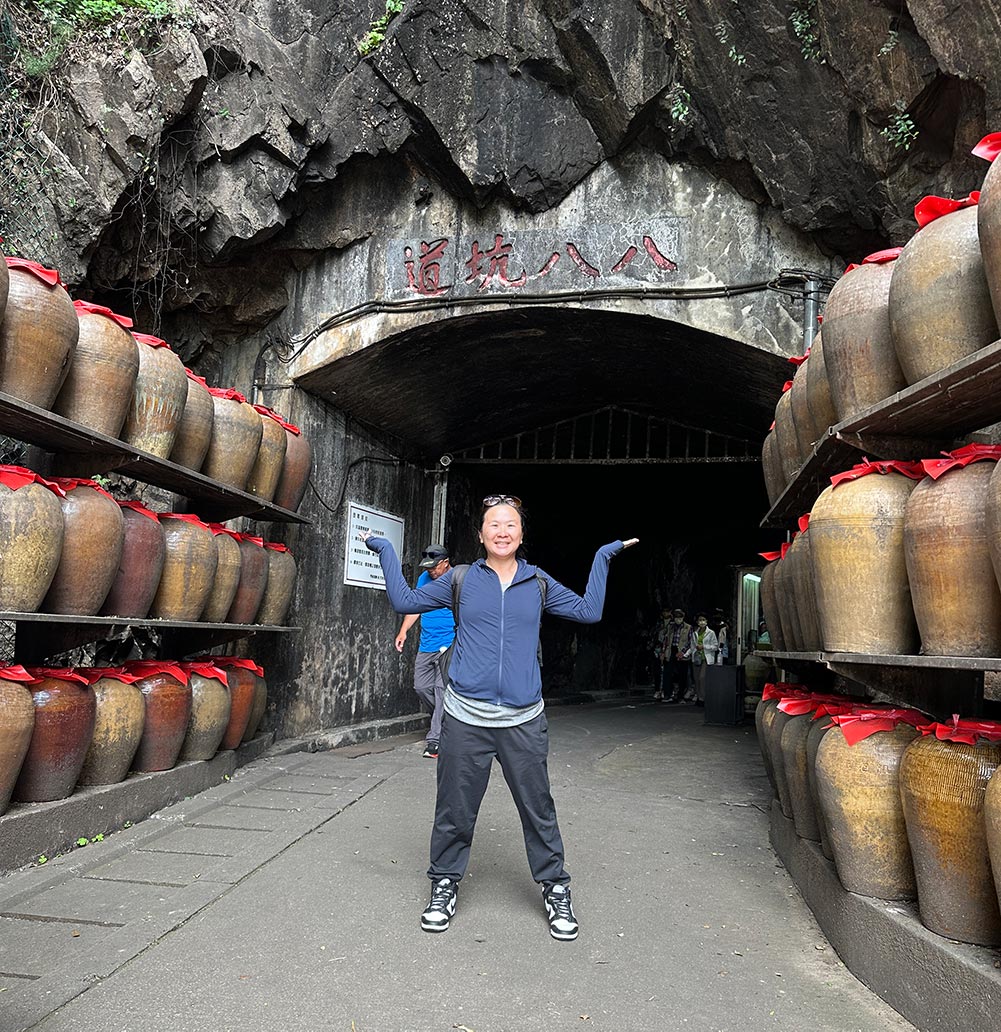
The tunnel was first a hideout from pirates and when the military came along, expanded for military use and named Baba (8-8) to commemorate Chiang Kai Shek’s 88th birthday which was its day of completion.
After demilitarisation, it was used to store the Sorghum wine that Matsu Islands are famous for. As you walk through the tunnel, it feels like you could get drunk just by breathing because of the strong wine scent in the air!
There is wine stored in traditional earthen jars as well as more modern storage tanks in a parallel chamber. The production of the jar wine has apparently been discontinued so eventually what you see stored here will run out!

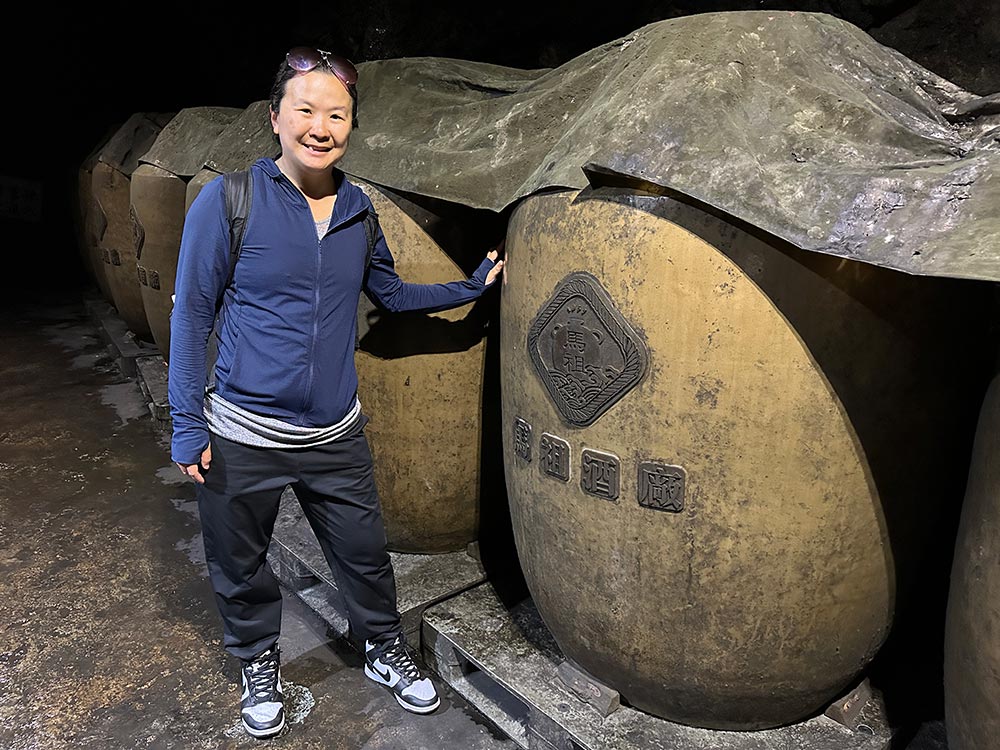

If you are interested in purchasing Matsu Island wine, the Matsu distillery and shop is just down the road. I wanted to see other things and didn’t plan on buying anything so I didn’t bother popping in.
Opening Hours: 840am – 1130am and 140pm – 5pm
The Thorn Birds Cafe 刺鳥咖啡獨立書店
One thing you’ll find a lot of on the Matsu Islands are military structures and bunkers, largely because of its proximity to China (similar to Kinmen). While the military presence is not as overt as it used to be, many of these old structures were either turned into visitable attractions or left abandoned.
Stronghold No. 12 on Nangan is quite an unusual example – on the northeastern end of the island near Niujiao Village, this structure was converted into a cute and hip cafe + bookstore with a lovely coastal view known as the Thorn Birds Cafe. It’s got quite an interesting history if you want to read more about it.
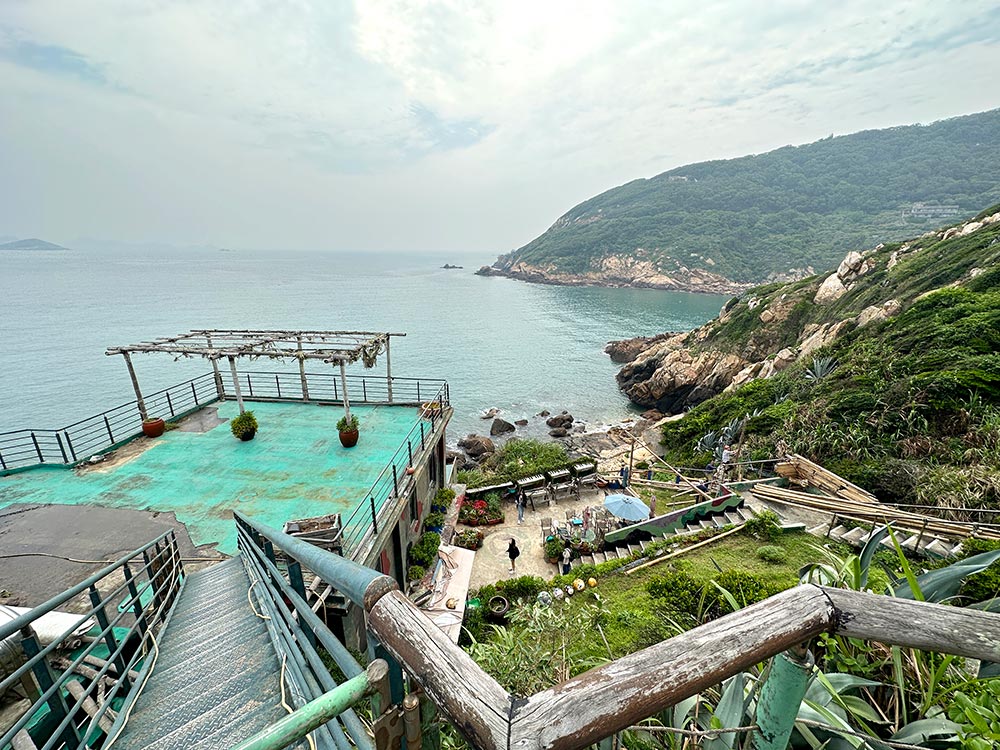
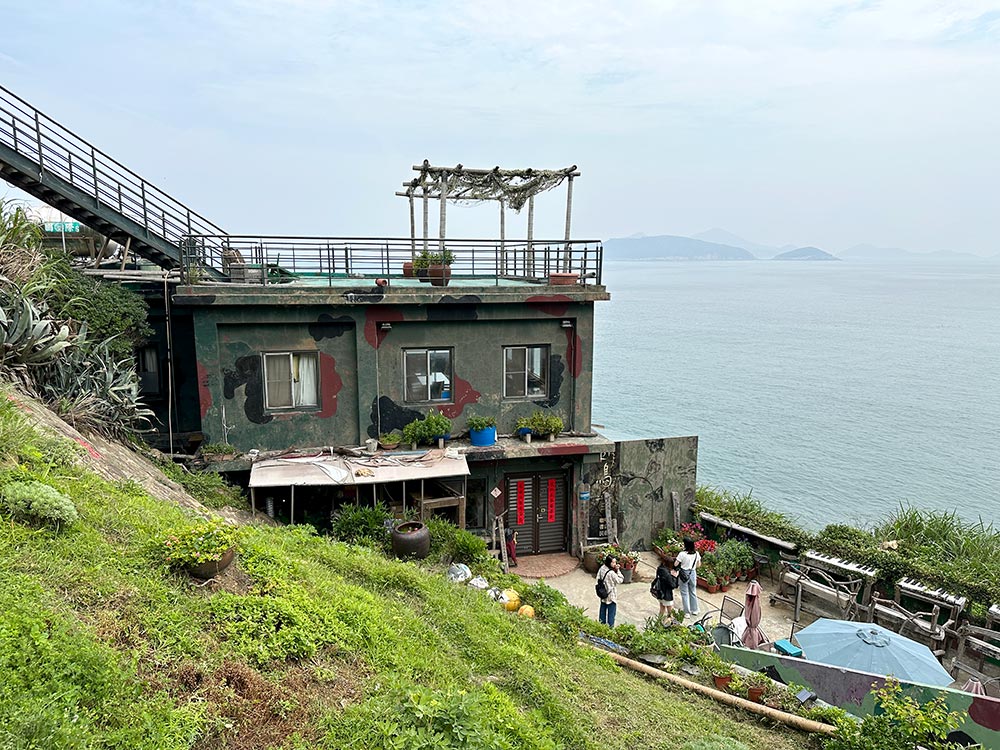
The cafe itself covers 2 floors and the staff will assign you seats, though the windows of course have the best view. Since I was solo, they put me in one of the inner rooms which was like a study where there were bench seats and a fabulous window view. Lots of Chinese books and old knick knacks all around so you really do feel like you’re in someone’s home.
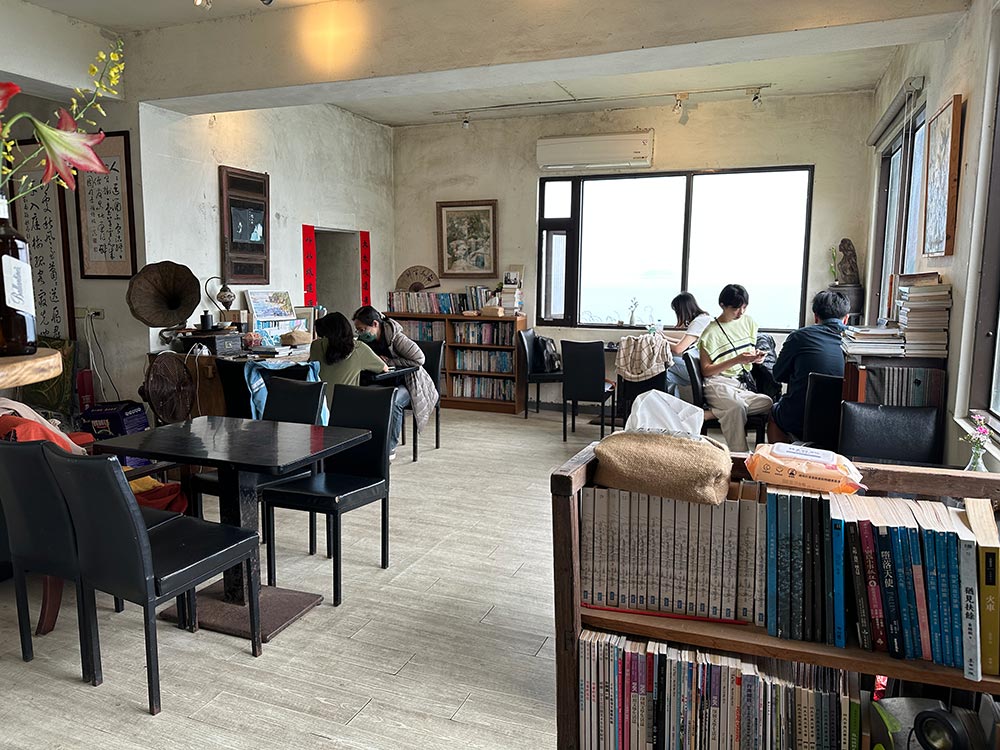
There’s a minimum order of 200 NTD (about S$8.50) though that’s not too hard to hit if you’re ordering a drink and some snacks. The menu is mostly tea/drinks and some toast/dessert pastries.
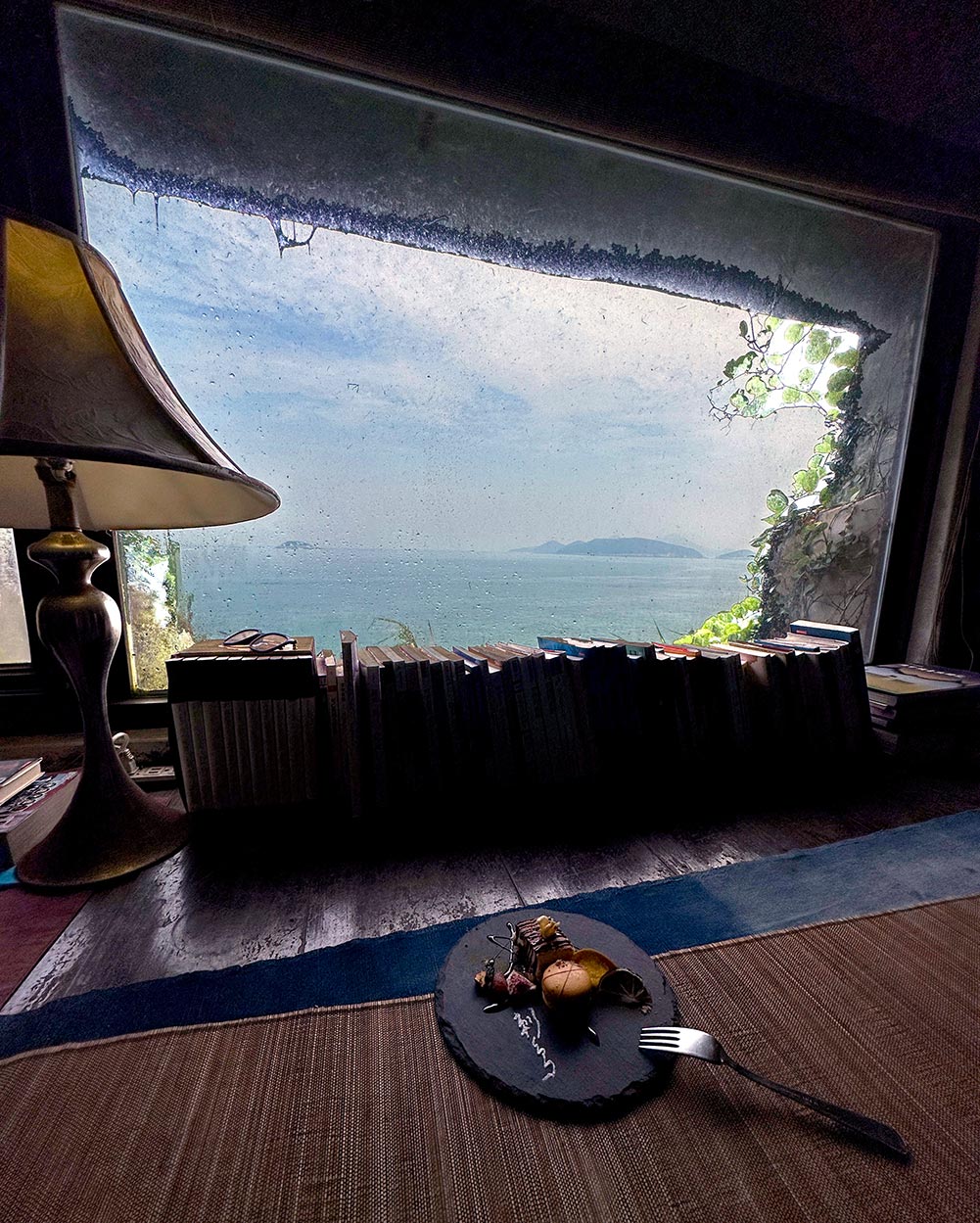
What’s truly special though is in the basement – Descend some stairs and walk through a tunnel and instead of the typical military watch post, this one has been jazzed up with art and artefacts and turned into mini art gallery of sorts.
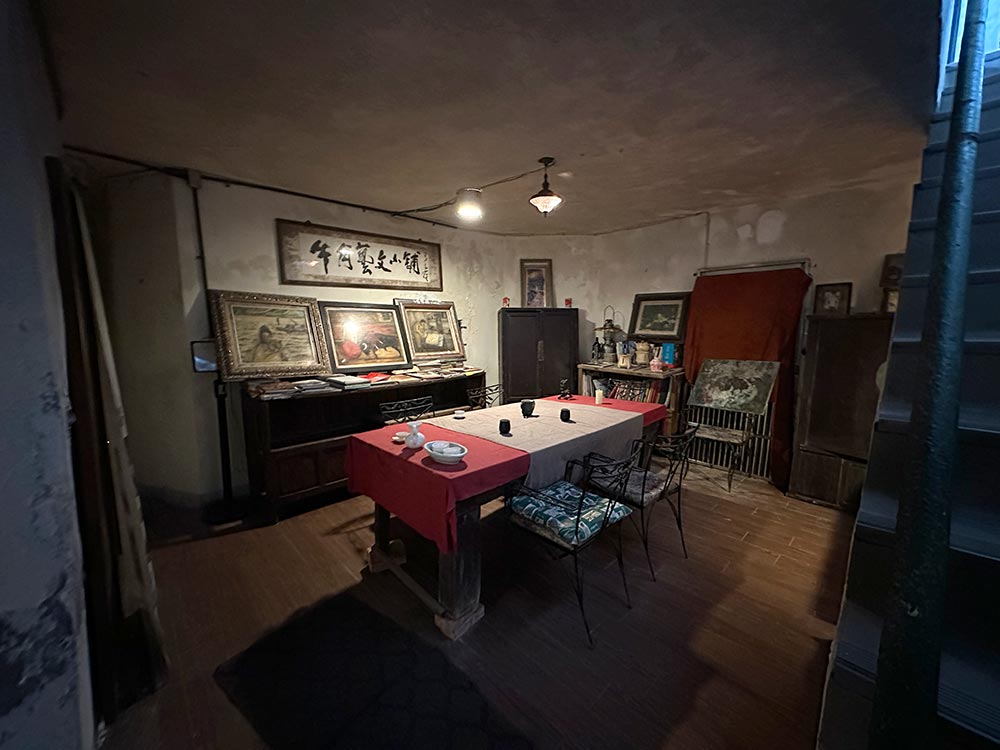
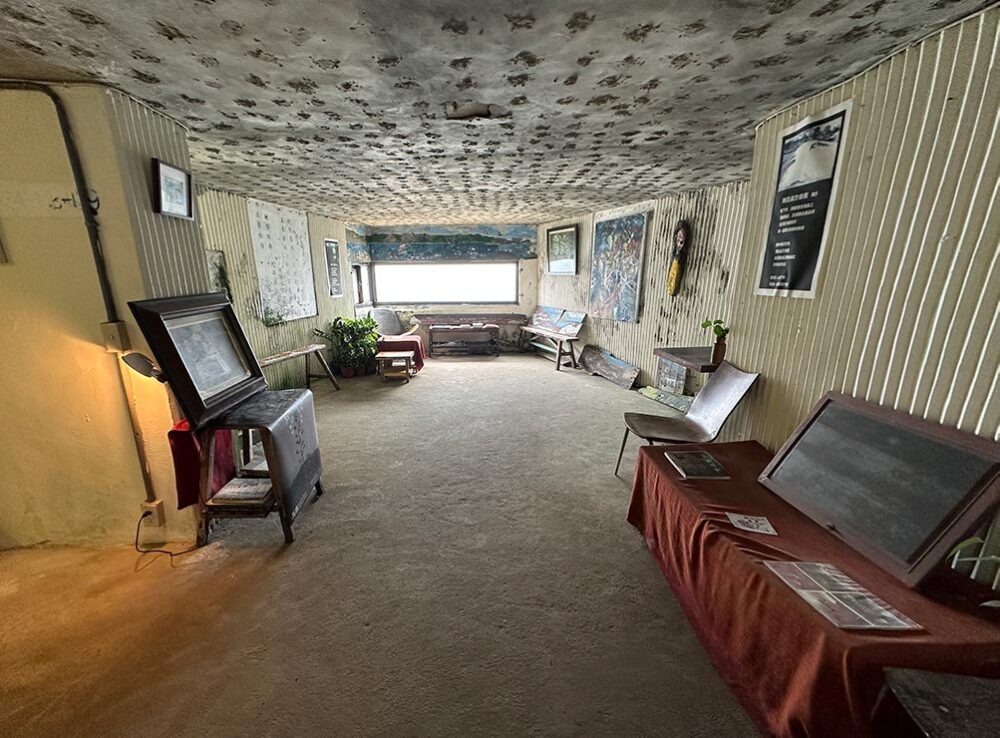
Opening Hours: They typically open 10am-6pm. A reservation MUST be made either via their social platforms (IG or FB) or by phone, they don’t allow walk-ins at all even if the place is empty. Only cafe guests can access the art tunnel.
The Thorn Birds is temporarily closed for renovations until Nov 2023, stay tuned to their socials for their reopening!
Zhenge Daidan Memorial Park 枕戈待旦牌樓
If you take the ferry to Nangan from the other Matsu Islands or from Taipei, you’ll definitely see this large sign as you approach the Fu’ao Ferry Terminal.
The words are read Chinese style from right to left: 枕戈待旦 zhěn gē dài dàn, which is a Chinese idiom that literally translates as ‘Spear on pillow, waiting for dawn’ and has a meaning of always ready to fight the war – it was words written by the president Chiang Kai Shek as a reminder for the troops and residents to spur them on during their battles with China.
I took the easy route and rode up here, but you can also climb the stairs for a scenic climb. There are more words behind the sign that faces the sea!
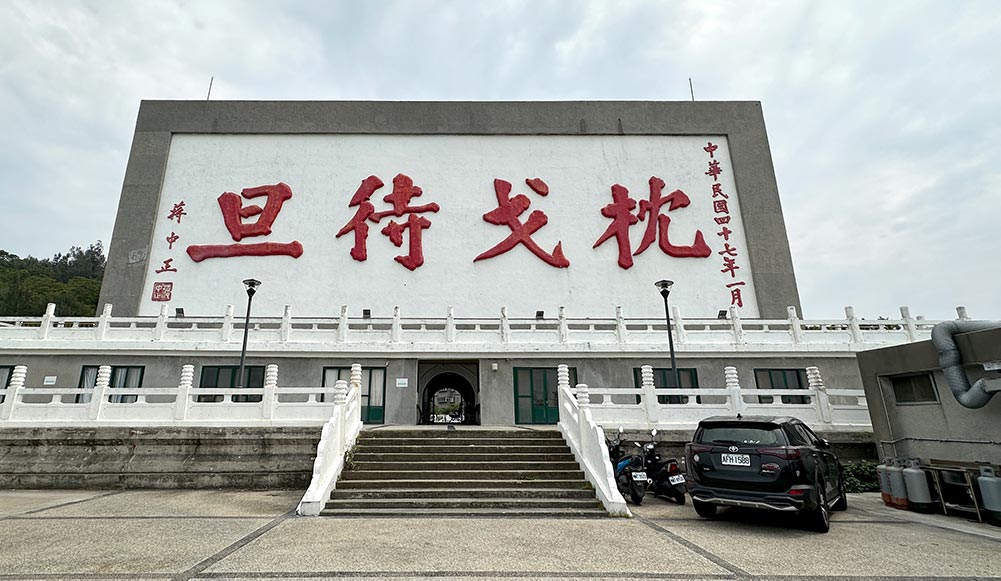


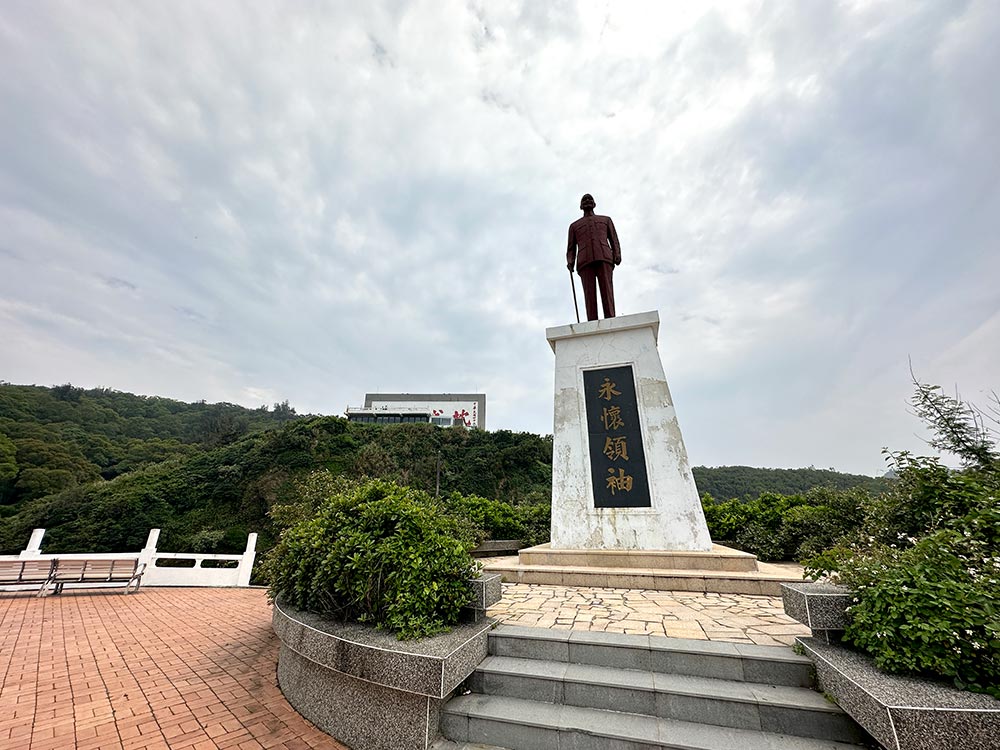
Matsu Folklore Culture Museum 馬祖民俗文物館
Just past Qingshui Village is the Matsu Folklore Culture Museum and it’s a great place to get a quick overview of the history and culture of the Matsu Islands.
The 2nd level was closed so I only got to see the 1st level, but it was visually attractive and well put together. There were even English translations for the exhibits, so it’s good for foreigners too. It was a nice post-lunch break to just escape the noon heat and learn some history of the islands.

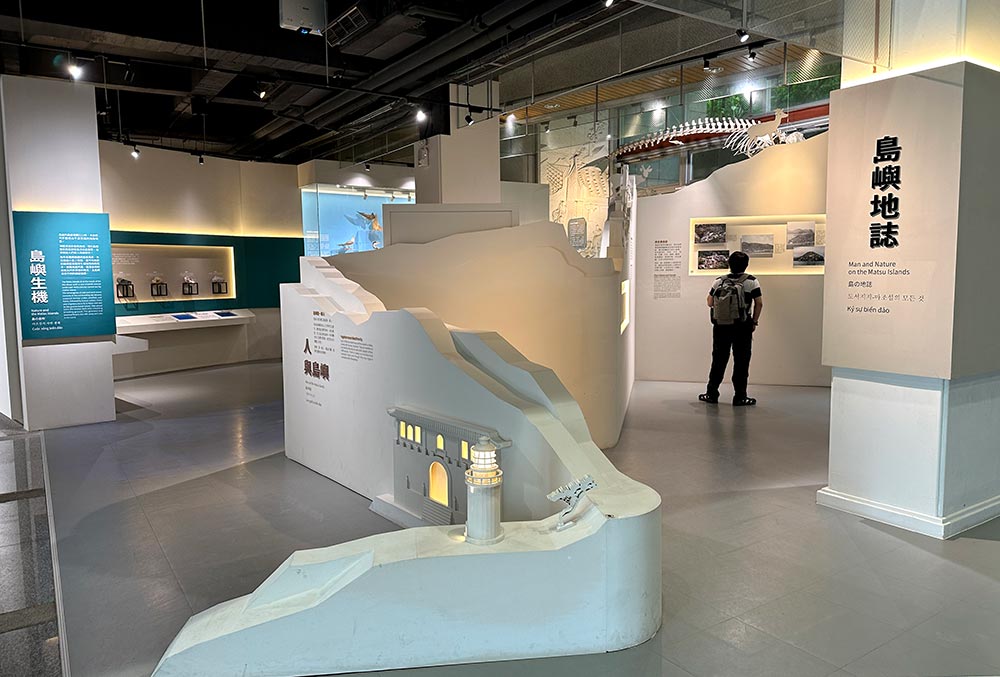
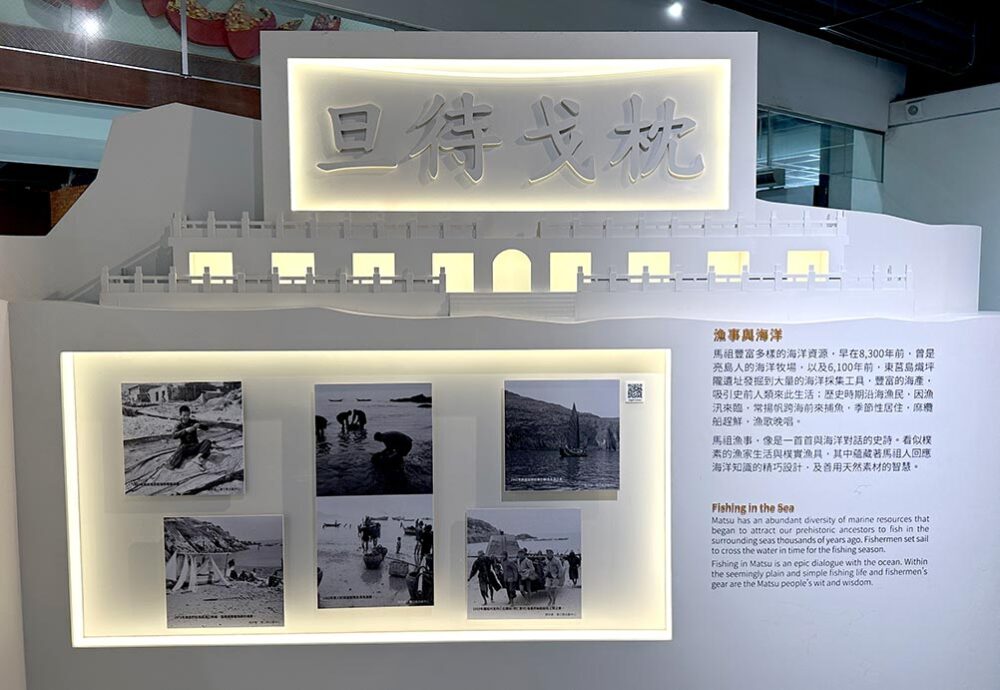
Opening Hours: 9am – 5pm (Closed on Mondays)
Mazu Statue 媽祖巨神像
The Matsu Islands are named for the sea goddess Matsu or Mazu 媽祖 as the Chinese say it, and naturally since these are the Matsu Islands, there is a huge ass Mazu statue here next to the Tianhou Temple on the western end of the island.
Built in 2009, the measurements of this statue hold a lot of significance – 365 granite rocks were used to represent days of peace throughout the year, and the height of the statue is 29.6m because the total land area of the Matsu Islands is 29.6 sq km.
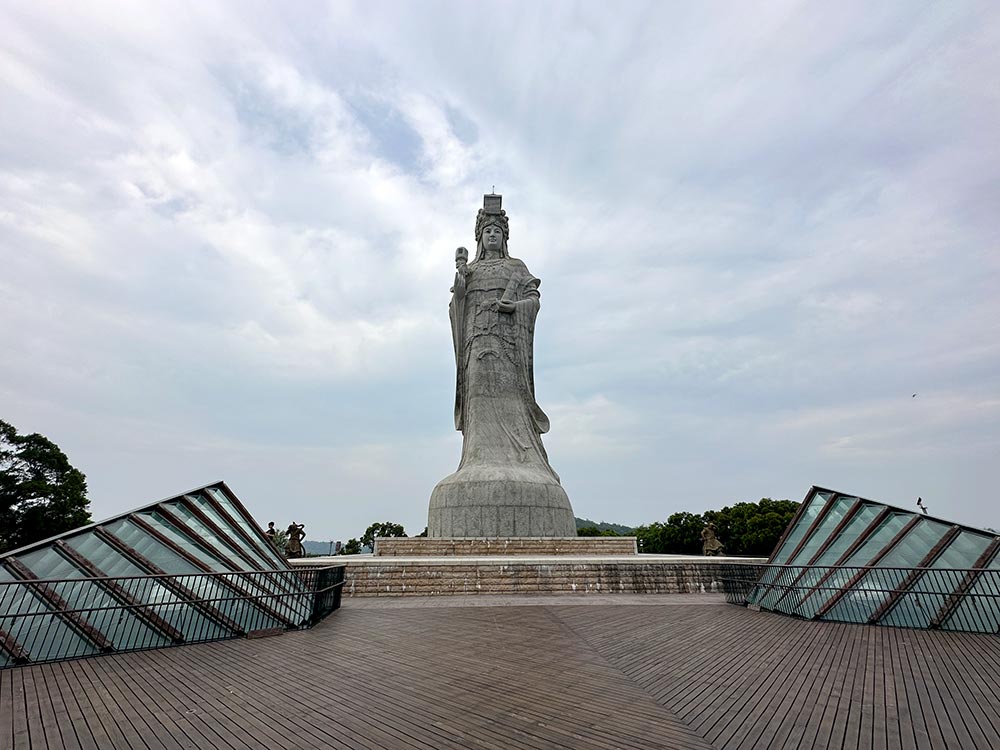
Those on bikes can ride up to the top of the hill so there’s less walking, but the devout (and car drivers) can climb these stairs to get to the viewing platform on top.
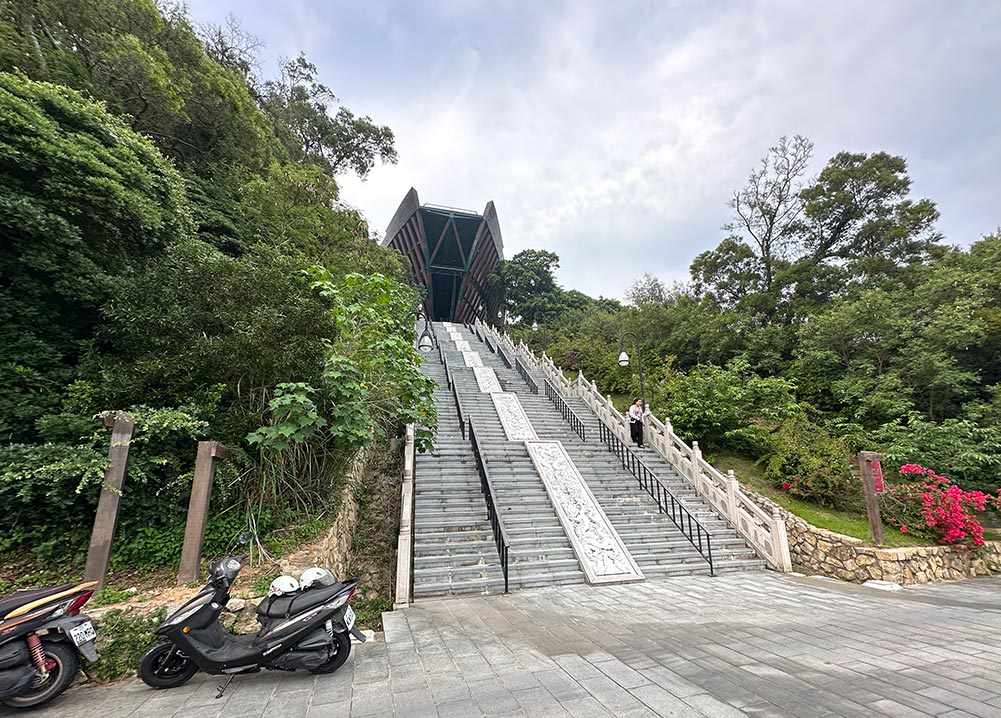
From the platform, you have a bird’s eye view of Mazu Port where there are military ships berthed.

Matsu Blue Tears Experience Centre 藍眼淚生態館
If you want a guaranteed sighting of Matsu Island’s famous Blue Tears, this experience centre will allow you to see the Blue Tears up close in any weather, albeit in a lab setting of sorts. It’s located near the giant Mazu statue.
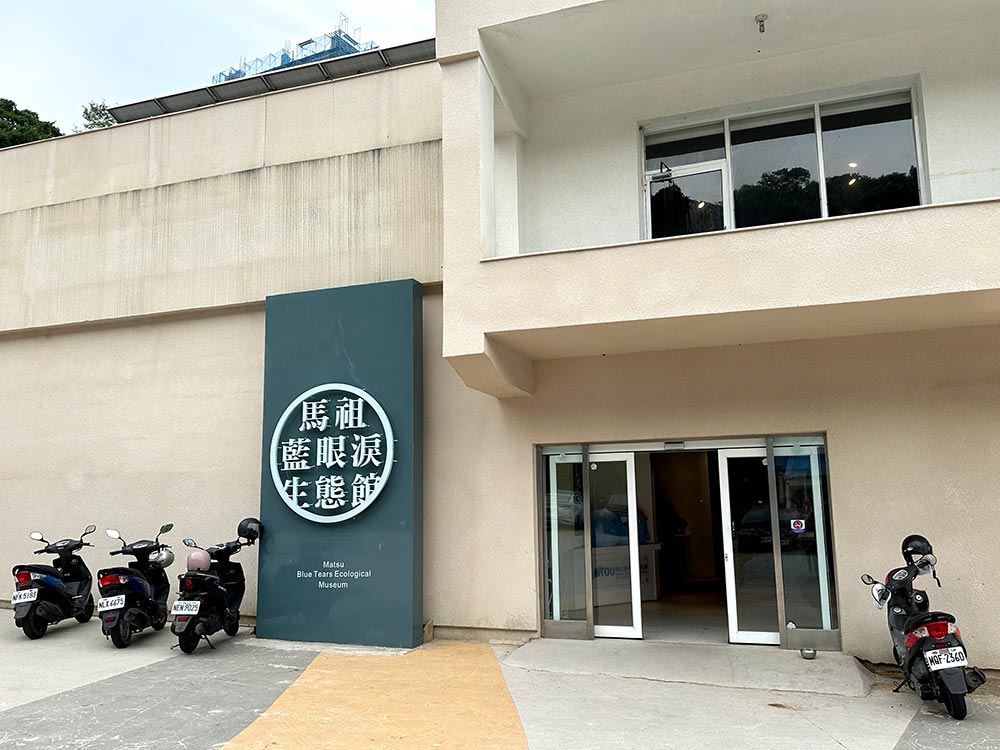

Read this post for full details about the Matsu Blue Tears Experience Centre.
Opening Hours: 10am – 5pm (Sessions start every half hour)
Admission Ticket: 350 NTD. You can book your Blue Tears Experience Centre Tickets via KKday [affiliate link] or buy at the door subject to availability.
Furen Cafe 夫人咖啡館
Since I was in the northwestern corner of the island, I decided to explore this area a little more. Here I found Furen Cafe which is also a little guesthouse by the sea. I definitely wasn’t expecting to find so many cute cafes here in the Matsu Islands!
It was a bit unusual in that they impose a ‘minimum spend’ by charging a ticket price at the door, but otherwise it is a charming little traditional stone house with lots of plants and a great view.
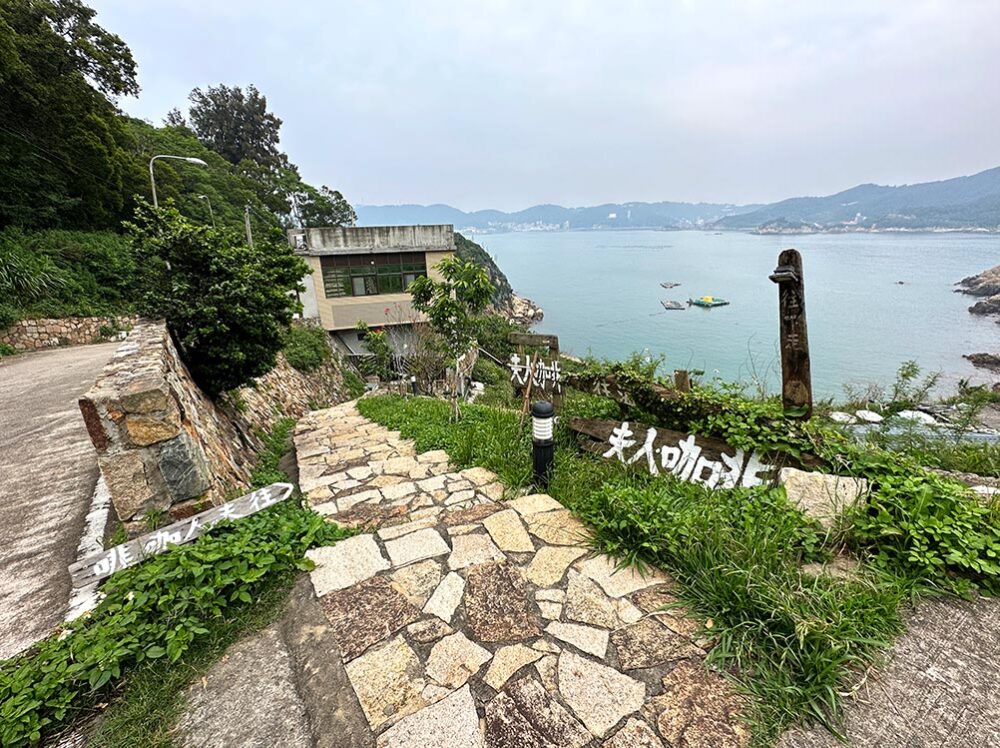

This was a bit of a weird time but I decided to have a late lunch/early dinner and had their cheese fried rice with red yeast. Lots of cute cats all around to keep you company!
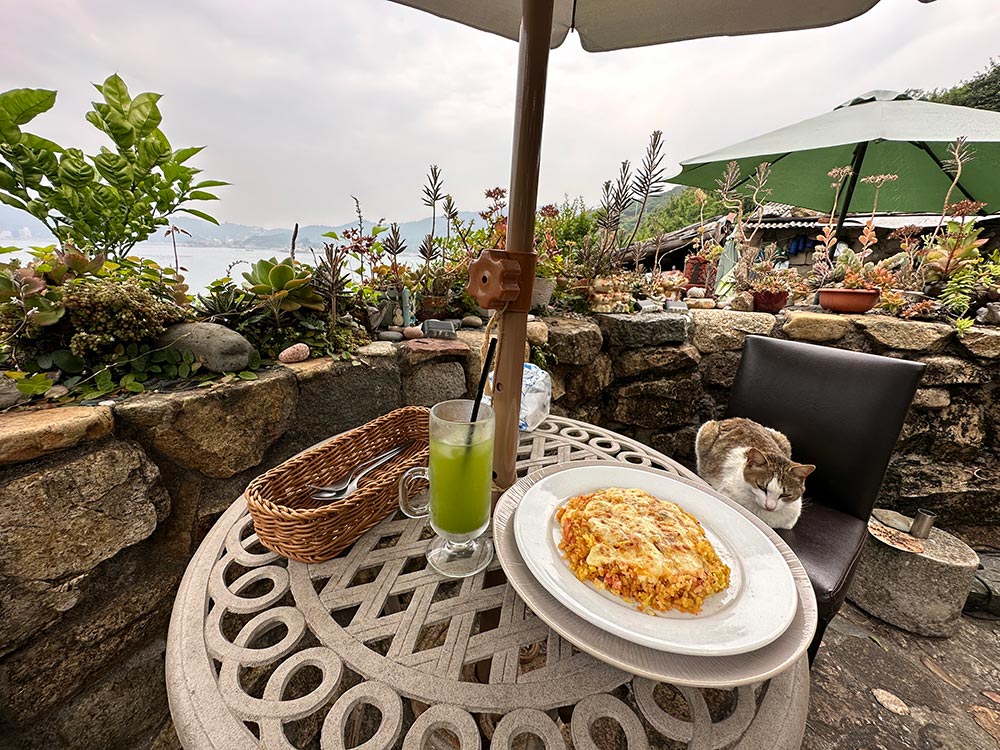
This cafe is also a guesthouse that you can stay at, though it’s a little bit too remote for me but if you want peace and quiet this is a great place.
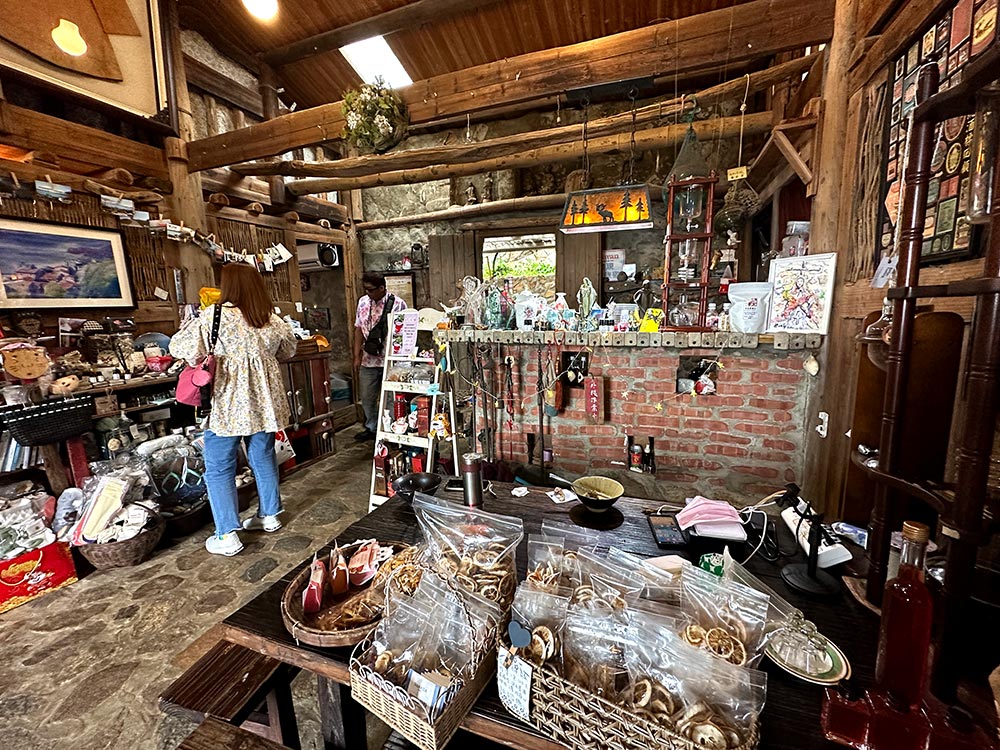
Opening Hours: 10am – 10pm. Check out their website or book a bed (they have a 8-pax dorm) at Furen Homestay [booking.com affiliate link]
Admission Ticket: there is a 150 NTD ‘admission ticket’ or minimum spend that you have to pay at the door but you can use that amount to offset your bill at the cafe.
Qiugui Pavilion 秋桂亭
Not far from Furen Cafe is Qiugui Pavilion, which is nothing particularly special but it does have a great view and a table with some seats that you can stop and rest at.
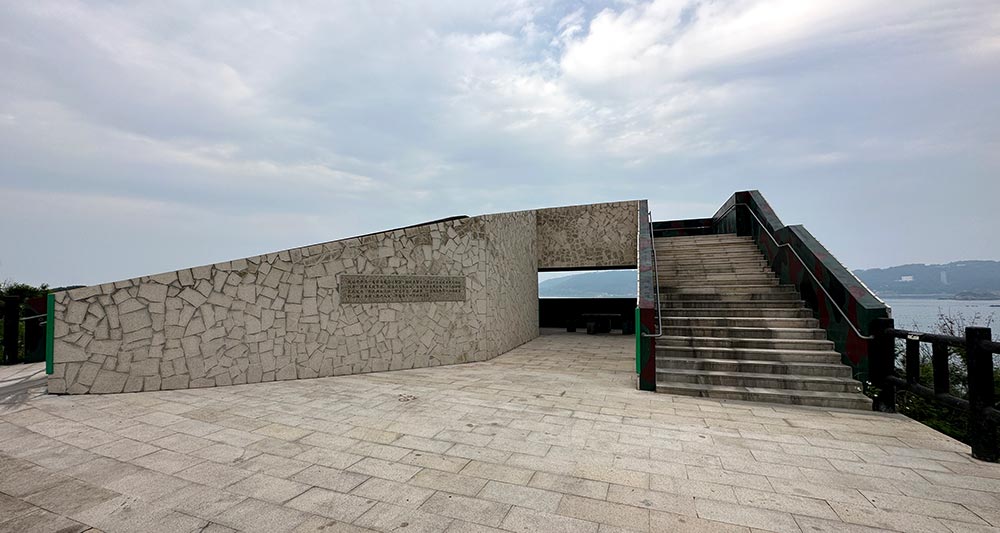

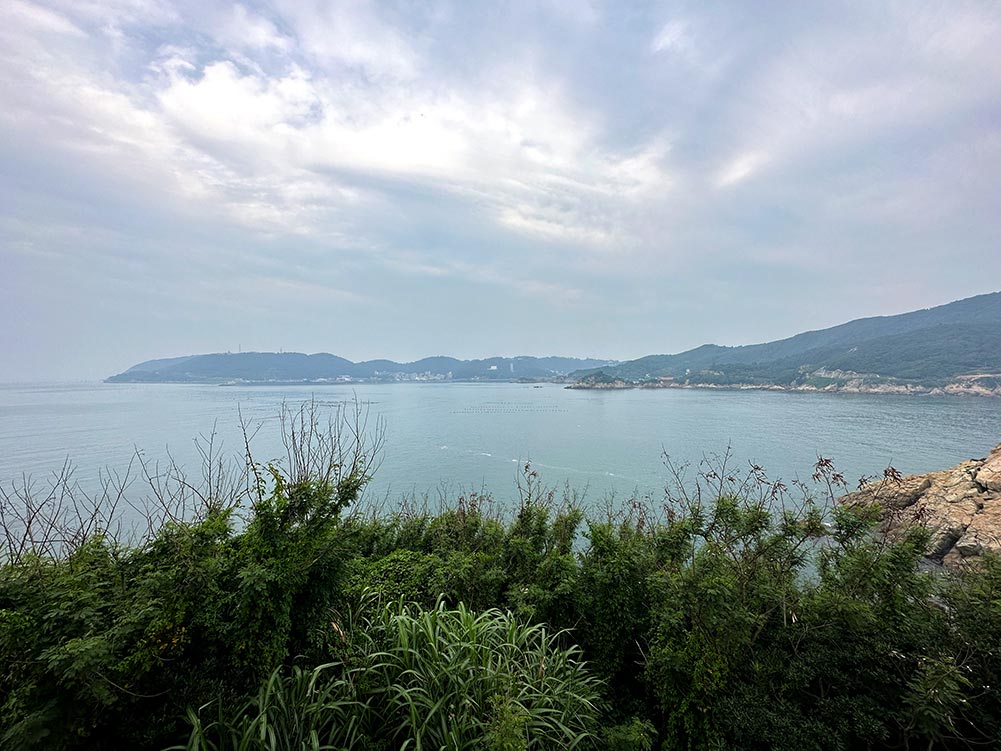
Nangan Mountain Route 南竿山線
This route covers the stuf you can see along the southern road that cuts across Nangan.
Jieshou Shizi Market 介壽獅子市場
Jieshou Village is the closest to Nangan Airport and the Shizi Market is supposed to be a great place to grab breakfast in Nangan. Unfortunately I only went in the early afternoon and everything was closed by then. Hopefully I get the chance to visit in future!

Opening Hours: 6am – 10am
Dahan Stronghold 大漢據點
Dahan Stronghold and Beihai Tunnel are actually located in the same area in the south of the island, just on opposite sides of the bay. You can enter this past military stronghold and explore its tunnels, though it might feel a bit claustrophobic for some.
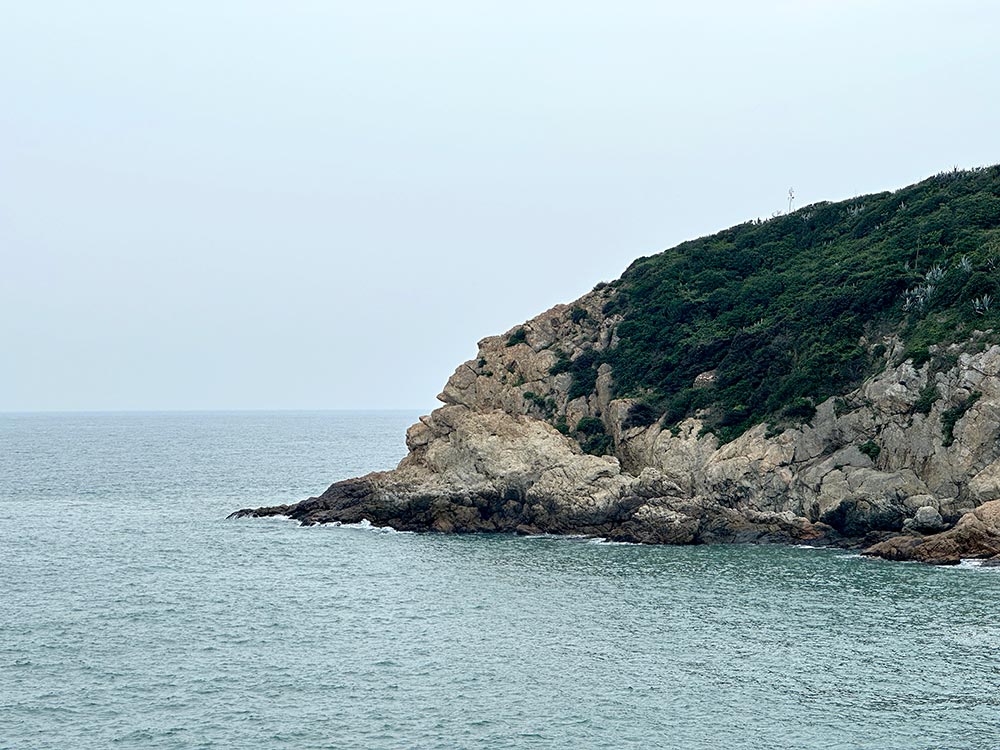
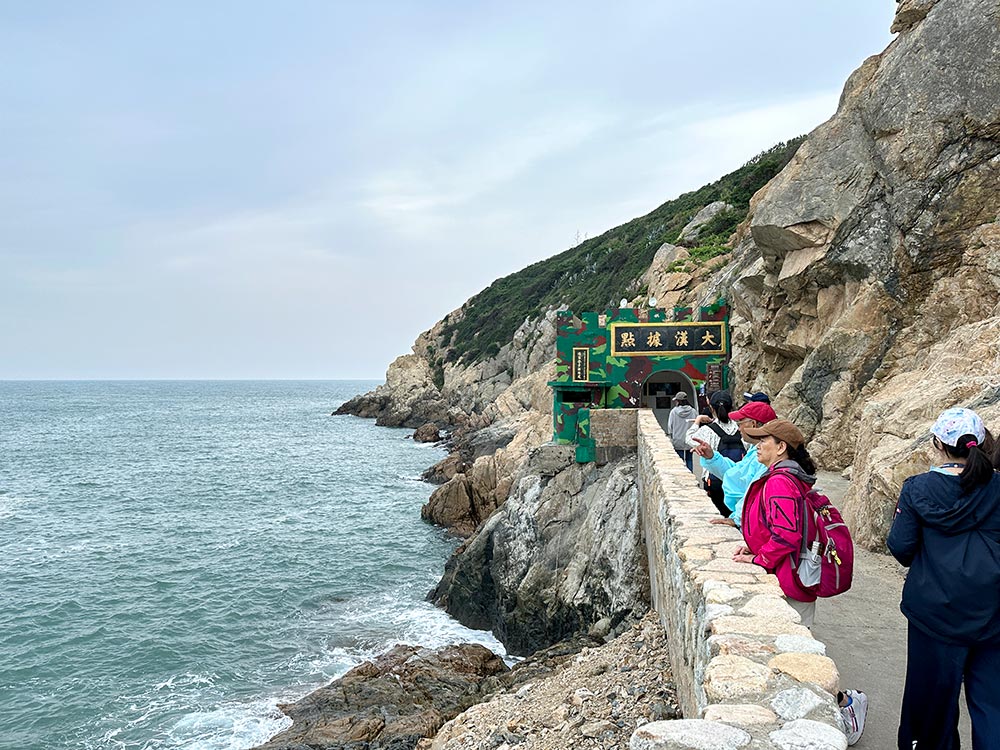

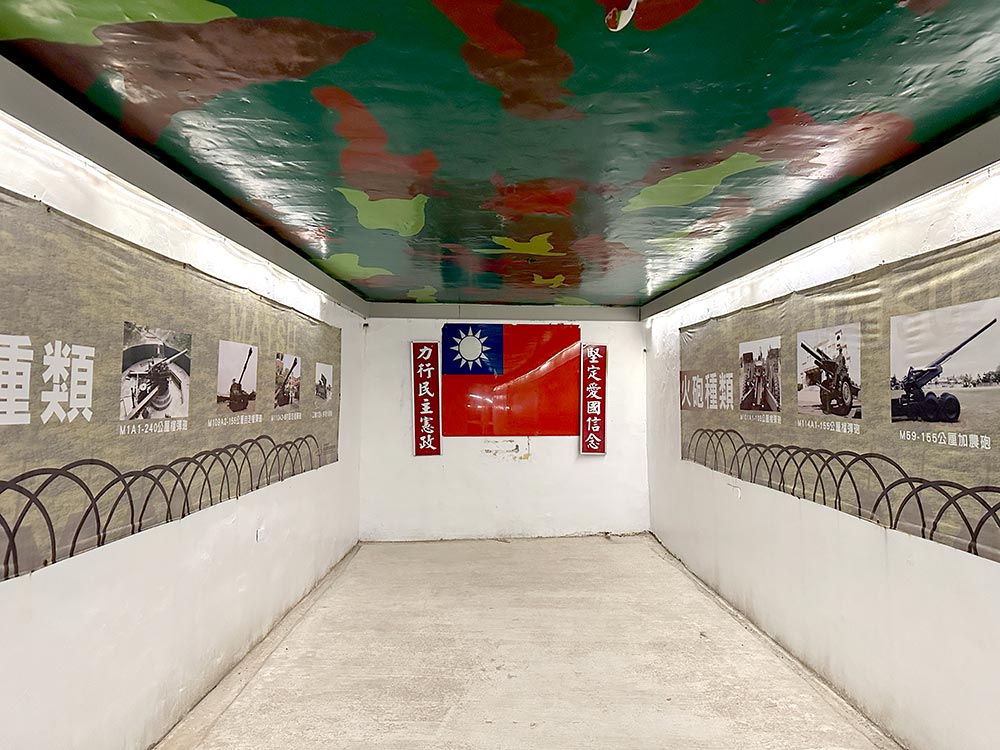

Opening Hours: 8am – 5pm
Beihai Tunnel 北海坑道
The Beihai Tunnel is another place in the Matsu Islands where you can guarantee a 100% Blue Tears sighting, though it might not be what it looks like in pix. Read more about the Beihai Tunnel Blue Tears boat ride that takes place after hours (6-9pm usually, though I was there during peak so they opened a 530pm slot and 10pm slots).

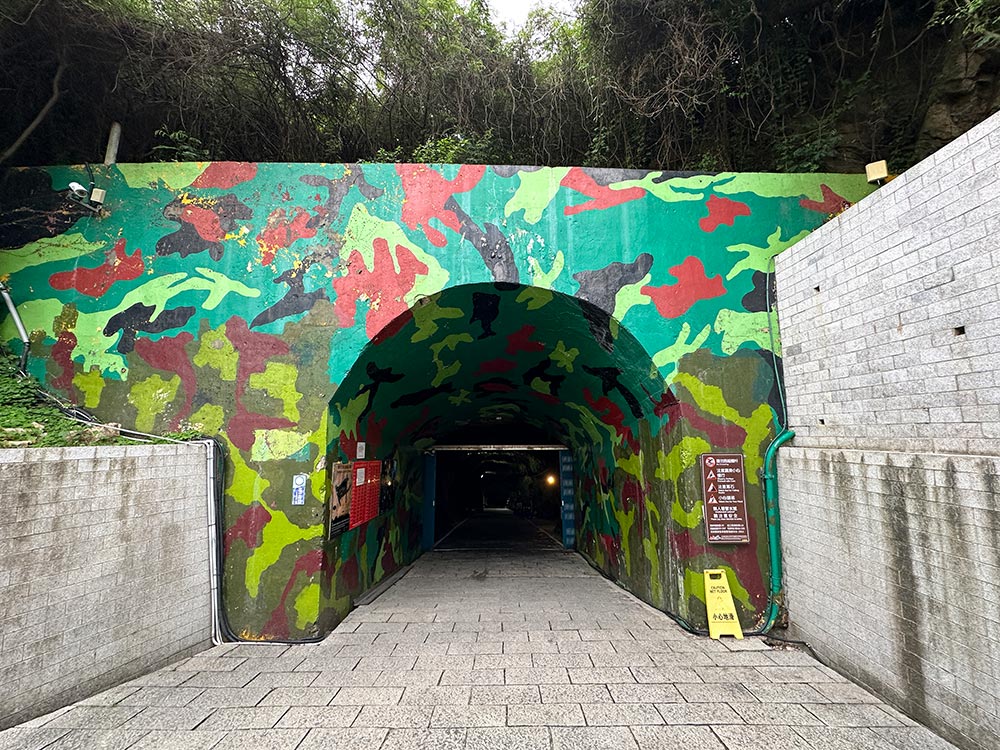
Believe it or not, this tunnel which runs in a square is entirely manmade and used to be where they hid military boats. Unfortunately, a lot of soldiers and builders died in the creation of these tunnels back in the day.
Most people come here for the Blue Tears boat ride in the evening, but in the day time during low tide, you are allowed to walk in and stroll around the entire perimeter on your own. It’s a bit damp and cool but the reflections of the rock in the water make it all quite majestic.
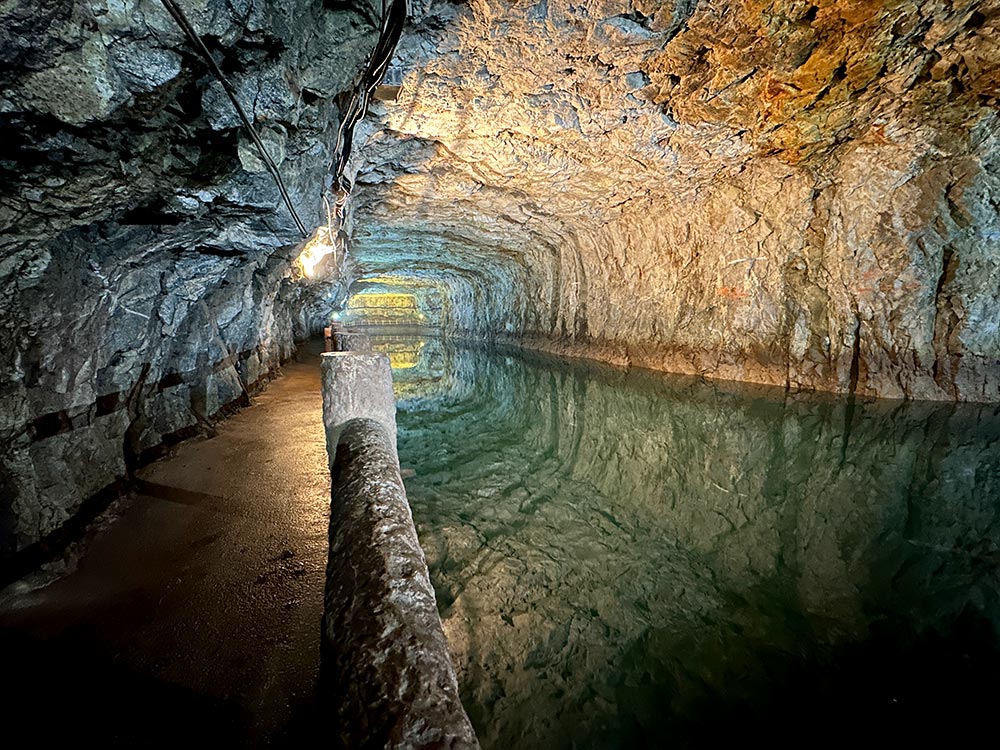

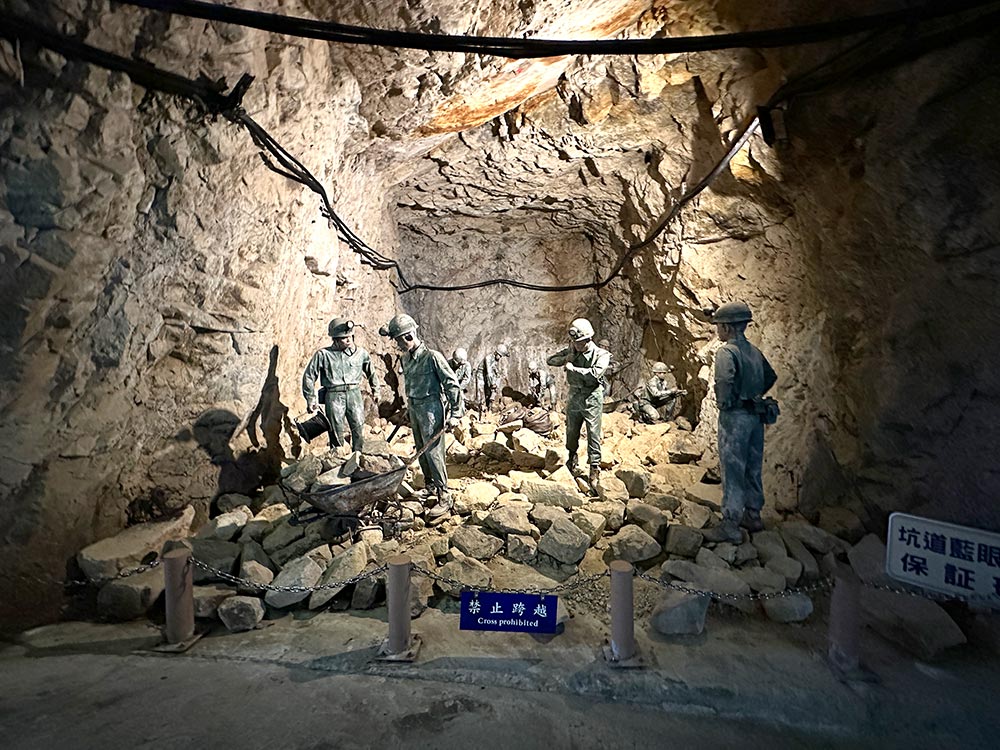
Opening Hours: To walk around, during low tide from 8am-5pm. Click here to check the Beihai Tunnel opening hours. Boat ride happens from 6pm-9pm typically.
Admission Ticket: It’s free to walk around the Beihai Tunnel, but if you intend to take the boat ride, that costs 350 NTD. More in my Blue Tears post.
Ren’ai Beach 仁愛沙灘
This beach is very close to Beihai Tunnel and one of the places that I saw the Blue Tears in the wild! Some Taiwanese friends I made were staying in a guesthouse that overlooked this beach.
Random tip for you: if you’re headed to Ren’ai Beach from Jinsha Village, don’t take the coastal Jinban road at night because it’s not lit!
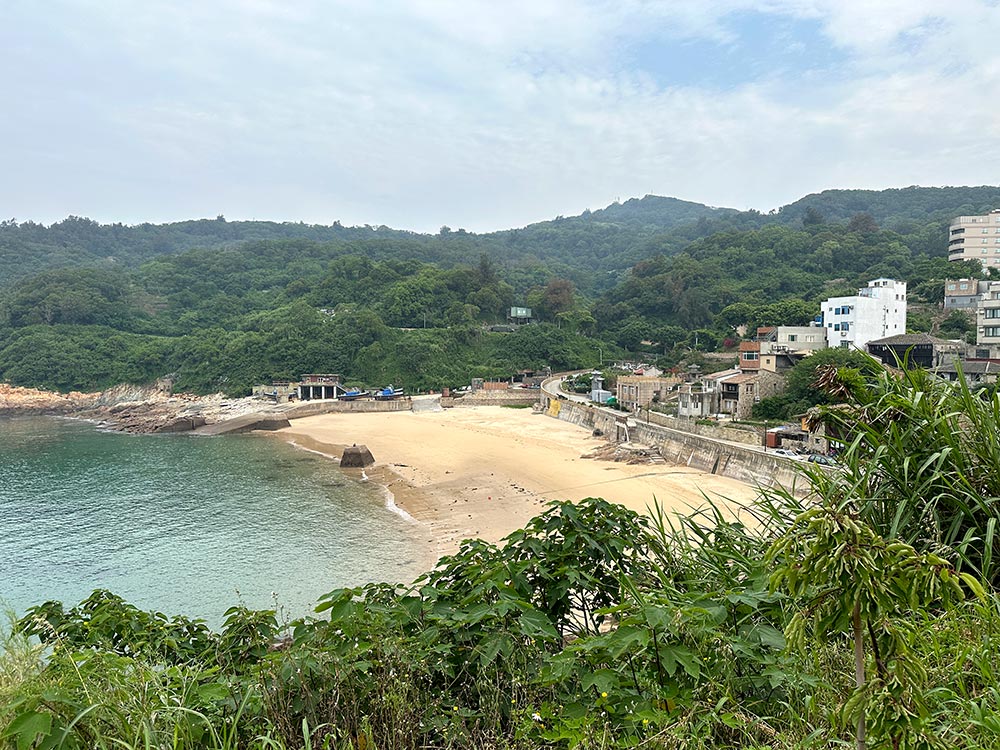
Iron Fort 鐵堡
Out of all the military structures, I think the Iron Fort is one of the prettier ones worth visiting because you can not only walk through the tunnels but on its roof as well. If you look closely at the rocks around here, they are covered with glass to stop enemy frogmen from climbing up them easily.


You start by walking inside and see the quarters where soldiers used to live and watch from, and then climb out to the roof to walk back.
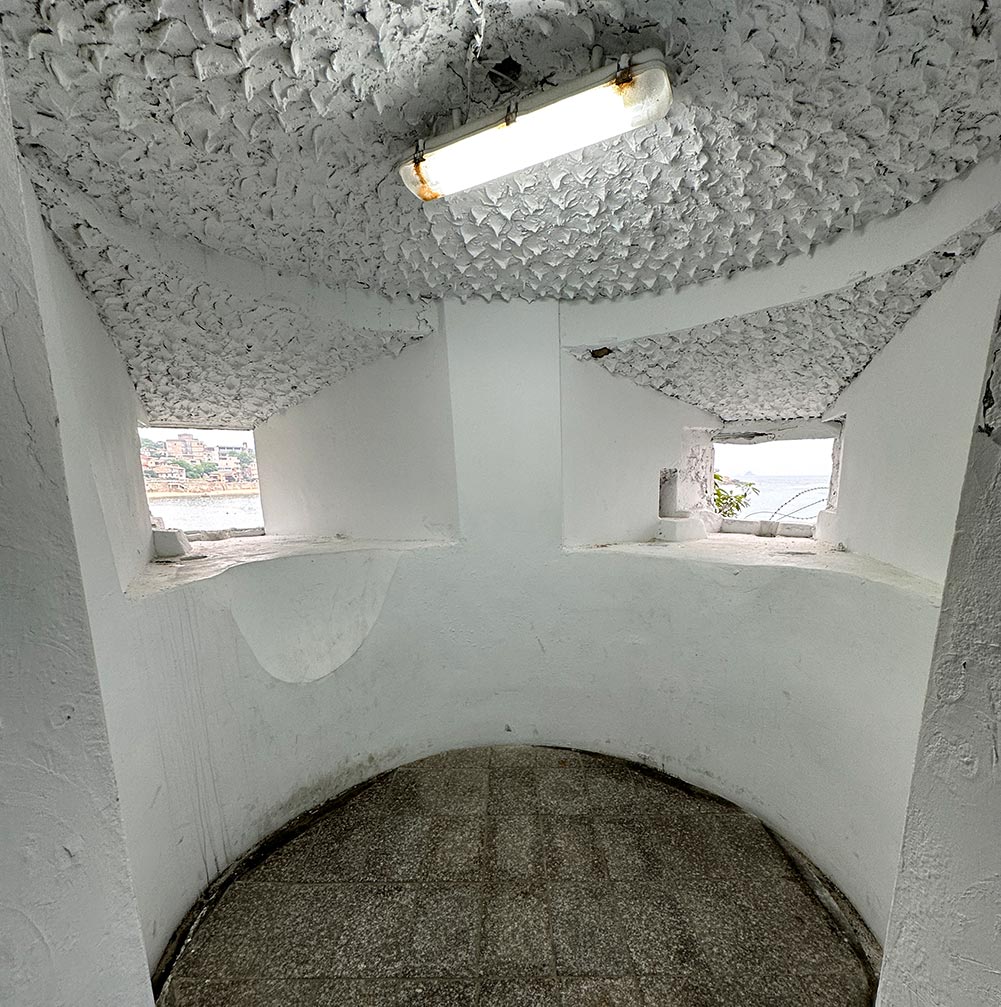
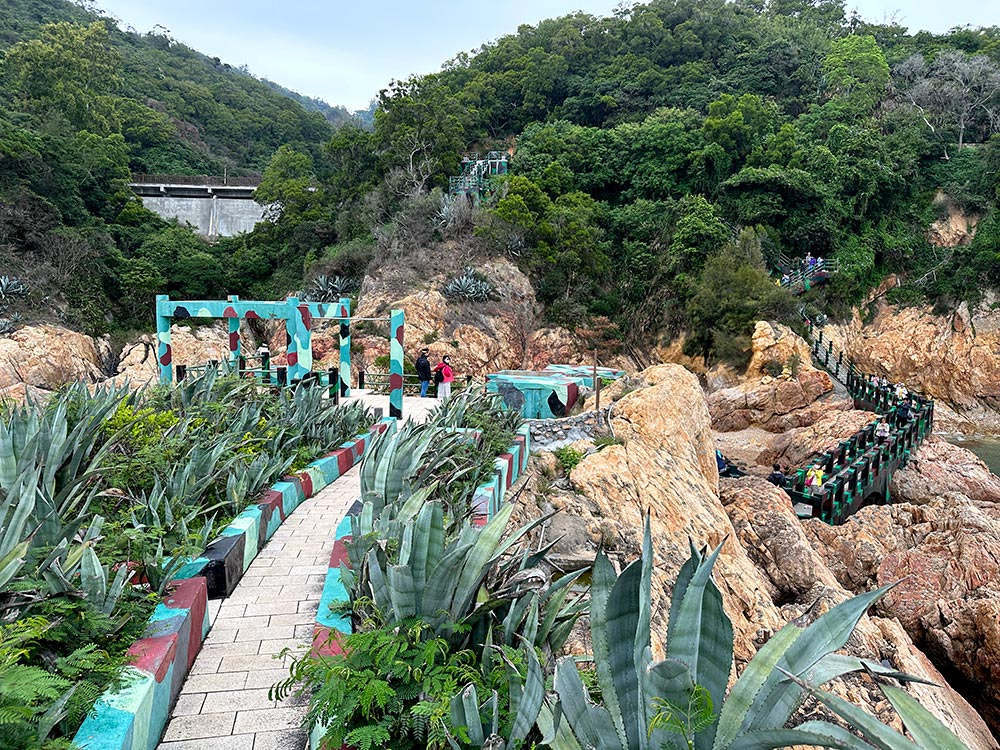
Opening Hours: 8am – 5pm
Yuntai Mountain 雲台山
Head to Nangan’s highest point on Yuntai Mountain for a splendid view from 248m above sea level! There’s a nice viewing platform to sit and rest in.
There is a military post here that unfortunately obstructs the 360º view – you need to apply for a permit if you want to visit it.
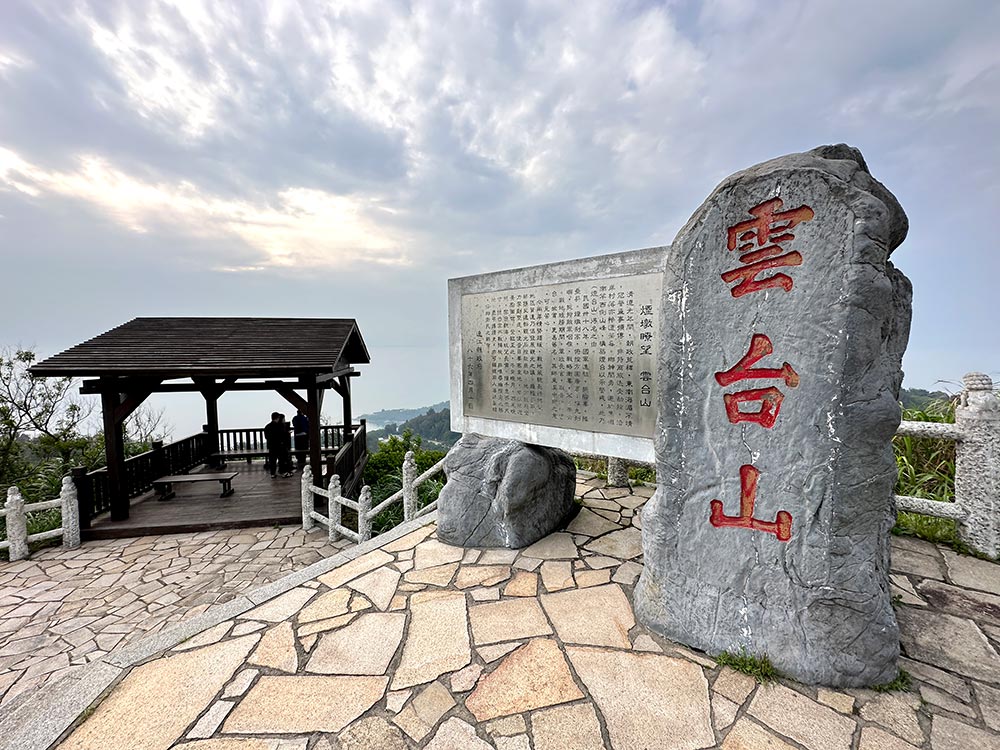
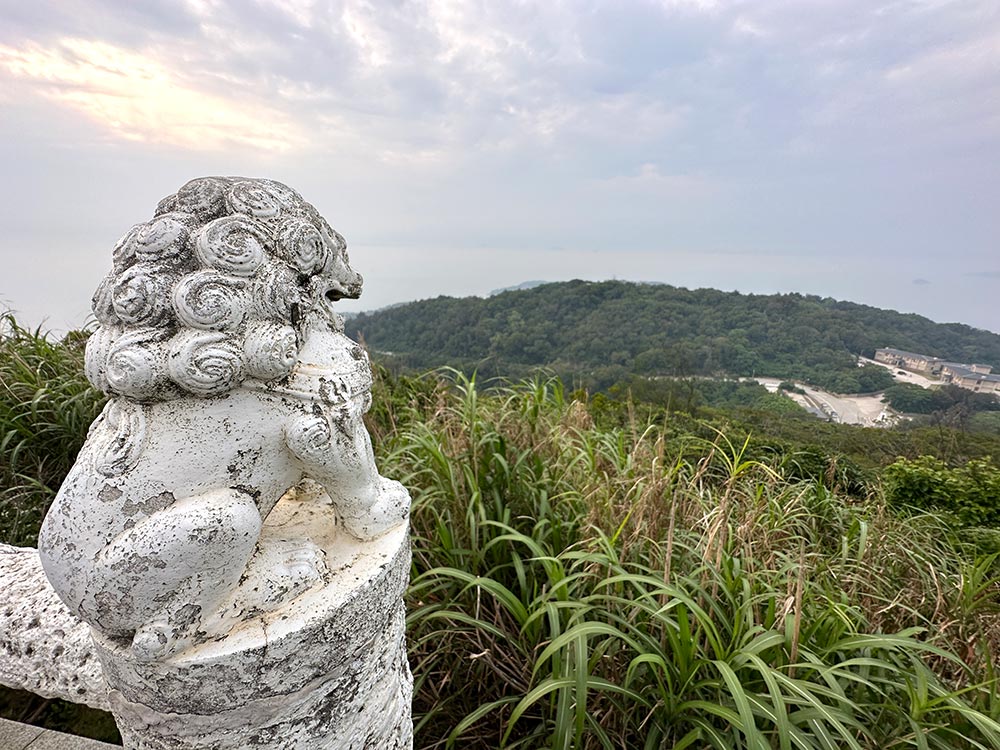

Jinsha Village 津沙聚落
Jinsha Village sits at the foot of Yuntai Mountain in the south western corner of Nangan and is one of the island’s most historical villages with lots of traditional stone houses. This is the village that I stayed in for two nights (read more in my Matsu Islands planning post), though many other visitors do pop by to visit during the day.
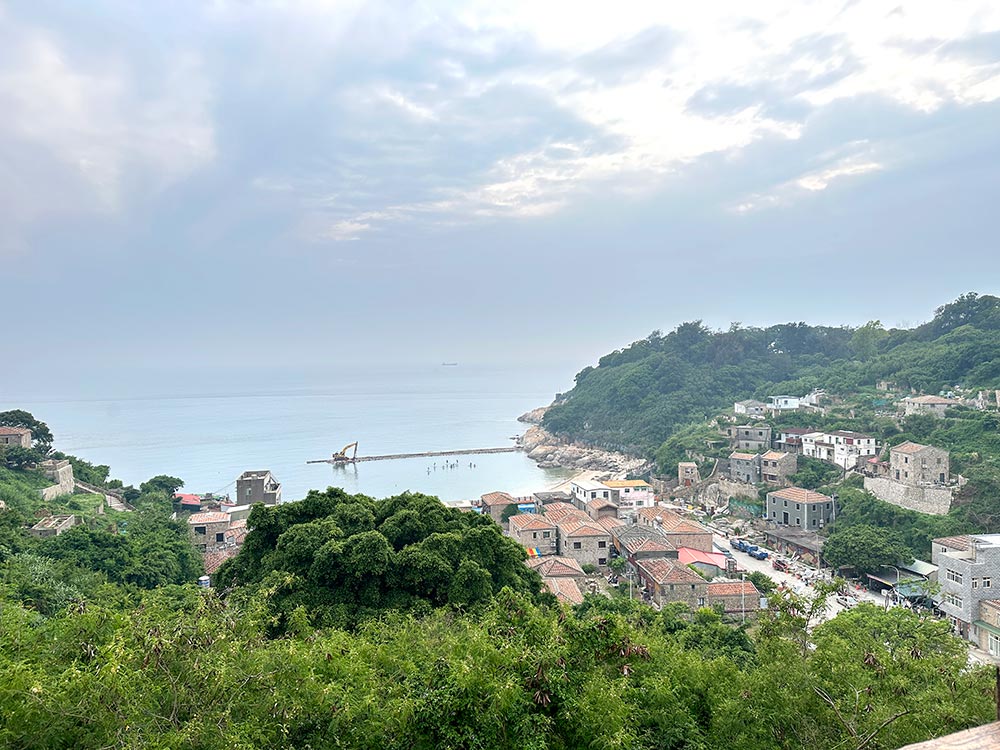

Jinsha Village has its own beach, unfortunately no Blue Tears were present when I was there. I spotted some SUP paddlers here in the afternoon.


A note that you need to eat dinner fairly early when in Matsu Islands, or make prior arrangements if you plan to eat late. In Jinsha itself there are just two places that are open for dinner, one of which is Under the Banyan Tree (Rongshu xia Xiaochi 榕樹下小吃) where I had dinner the first night and made some new Taiwanese friends.
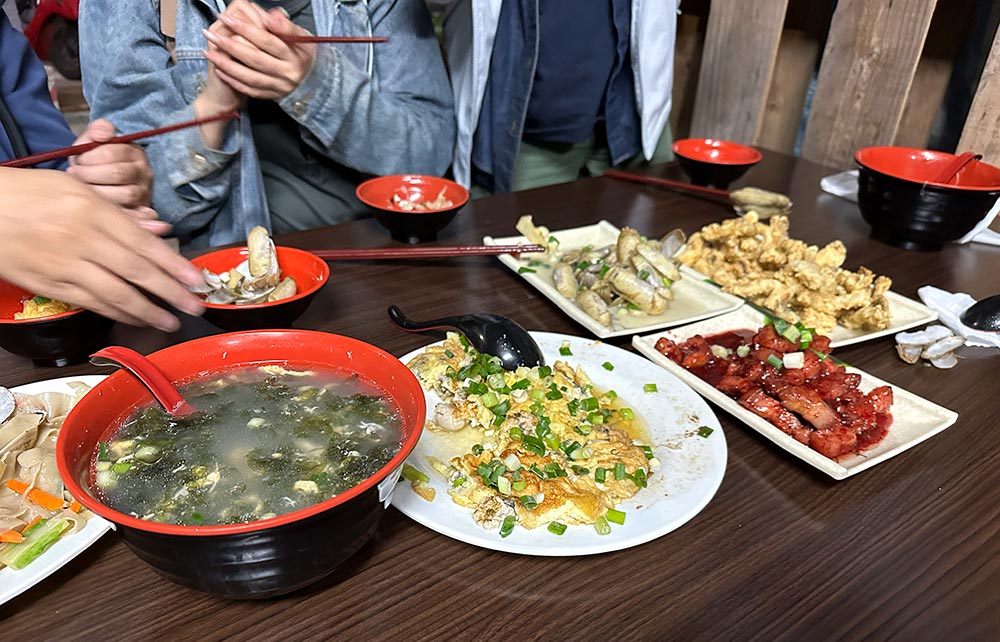
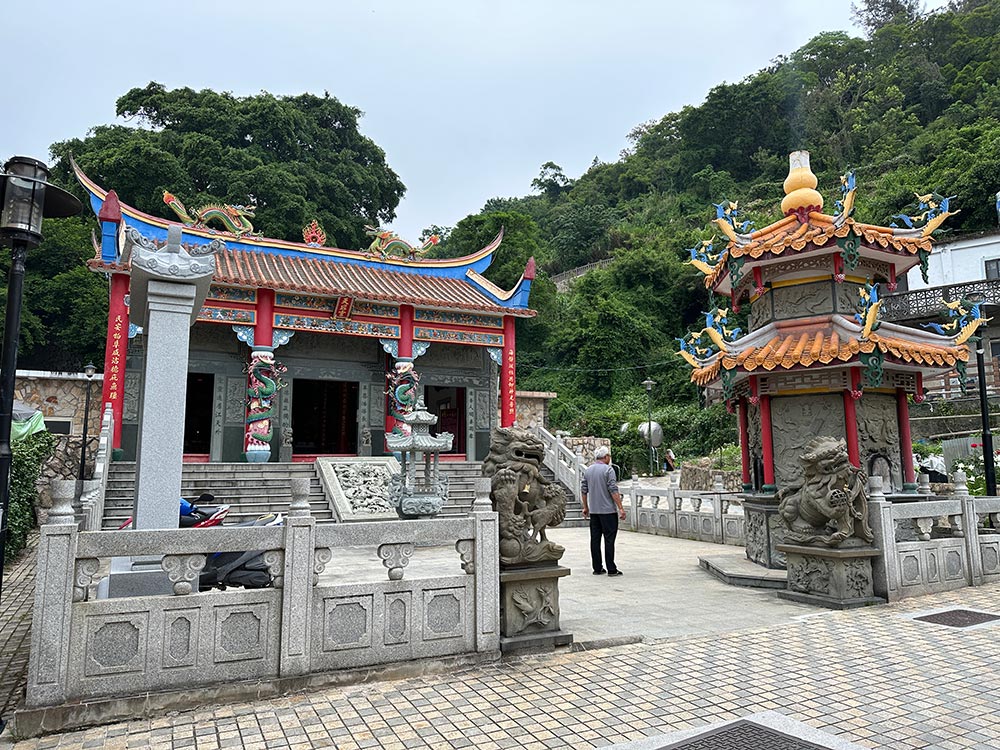

Looking for more about the Matsu Islands? Check out my Beigan Guide, Matsu Island Guide to plan your trip or how to see the Blue Tears in the Matsu Islands.
Or check out more about Taiwan’s offshore islands below:


